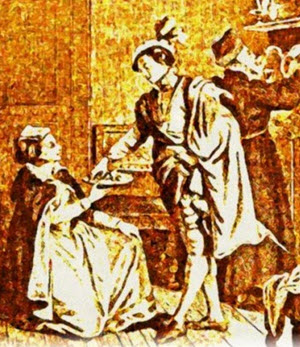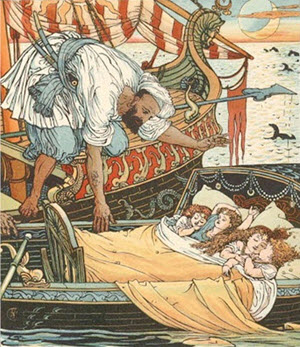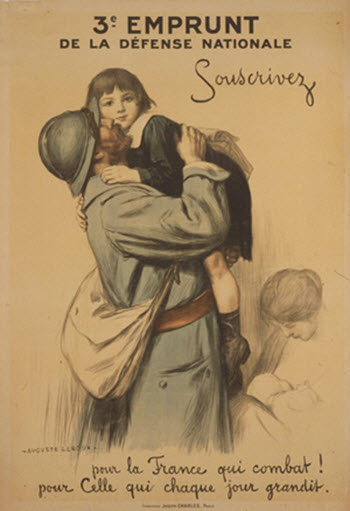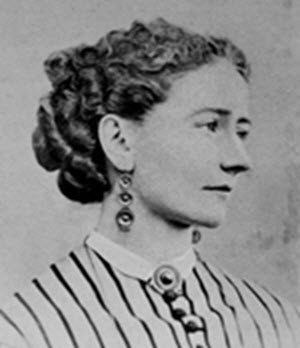Home > Secret Rooms and Hiding Places > >
Chapter: [1] [2] [3] [4] [5] [6] [7] [8] [9] [10] [11] [12] [13] [14] [15] [16] [17]
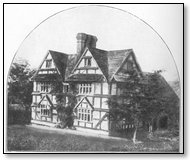
MYSTERIOUS ROOMS
MYSTERIOUS ROOMS
At the "Restoration House" previously mentioned there is a secret passage in the wall of an upper room; but though the Merry Monarch is, according to popular tradition, credited with a monopoly of hiding-places all over England, it is more than doubtful whether he had recourse to these exploits, in which he was so successful in 1651, upon such a joyful occasion, except, indeed, through sheer force of habit.
Even Cromwell's name is connected with hiding-places! But it is difficult to conjecture upon what occasions his Excellency found it convenient to secrete himself, unless it was in his later days, when he went about in fear of assassination.
Hale House, Islington, pulled down in 1853, had a concealed recess behind the wainscot over the mantel-piece, formed by the curve of the chimney. In this, tradition says, the Lord Protector was hidden. Nor is this the solitary instance, for a dark hole in one of the gable ends of Cromwell House, Mortlake (taken down in 1860), locally known as "Old Noll's Hole," is said to have afforded him temporary accommodation when his was life in danger.[1] The residence of his son-in-law Ireton (Cromwell House) at Highgate contained a large secret chamber at the back of a cupboard in one of the upper rooms, and extended back twelve or fourteen feet, but the cupboard has now been removed and the space at the back converted into a passage.
[Footnote 1: See Faulkner's History of Islington.]
The ancient manor house of Armscot, in an old-world corner of Worcestershire, contains in one of its gables a hiding-place entered through a narrow opening in the plaster wall, not unlike that at Ufton Court, and capable of holding many people. From the fact that George Fox was arrested in this house on October 17th, 1673, when he was being persecuted by the county magistrates, the story has come down to the yokels of the neighbourhood that "old Guy Fawkes, the first Quaker," was hidden here! In his journal Fox mentions his arrest at Armscot after a "very large and precious meeting" in the barn close by; but we have no allusion to the hiding-place, for he appears to have been sitting in the parlour when Henry Parker, the Justice, arrived—indeed, George Fox was not the sort of man to have recourse to concealments, and owe his escape to a "priest's hole."
The suggestion of a sudden reverse in religious persecution driving a Quaker to such an extremity calls to mind an old farmstead where a political change from monarchy to commonwealth forced Puritan and cavalier consecutively to seek refuge in the secret chamber. This narrow hiding-place, beside the spacious fire-place, is pointed out in an ancient house in the parish of Hinchford, in Eastern Essex.
Even the notorious Judge Jeffreys had in his house facilities for concealment and escape. His old residence in Delahay Street, Westminster, demolished a few years ago, had its secret panel in the wainscoting, but in what way the cruel Lord Chancellor made use of it does not transpire; possibly it may have been utilised at the time of James II.'s flight from Whitehall.
A remarkable discovery was made early in the last century at the Elizabethan manor house of Bourton-on-the-Water, Gloucestershire, only a portion of which remains incorporated in a modern structure. Upon removing some of the wallpaper of a passage on the second floor, the entrance to a room hitherto unknown was laid bare. It was a small apartment about eight feet square, and presented the appearance as if some occupant had just quitted it. A chair and a table within, each bore evidence of the last inmate. Over the back of the former hung a priest's black cassock, carelessly flung there a century or more ago, while on the table stood an antique tea-pot, cup, and silver spoon, the very tea leaves crumbled to dust with age. On the same storey were two rooms known as "the chapel" and the "priest's room," the names of which signify the former use of the concealed apartment.
Sir Walter Scott records a curious "find," similar in many respects to that at Bourton. In the course of some structural alterations to an ancient house near Edinburgh three unknown rooms were brought to light, bearing testimony of their last inmate. One of them had been occupied as a bedroom. The clothing of the bed was disarranged, as if it had been slept in only a few hours previously, and close by was an antique dressing-gown. How interesting it would be to know some particulars of the sudden surprise which evidently drove the owner of the garment from his snug quarters—whether he effected his escape, or whether he was captured! The walls of this buried chamber, if they could speak, had some curious story to relate.
Not many years ago the late squire of East Hendred House, Berkshire, discovered the existence of a secret chamber in casually glancing over some ancient papers belonging to the house. "The little room," as it was called, from its proximity to the chapel, had no doubt been turned to good account during the penal laws of Elizabeth's reign, as the chamber itself and other parts of the house date from a much earlier period.
Long after the palatial Sussex mansion of Cowdray was burnt down, the habitable remains (the keeper's lodge, in the centre of the park) contained an ingenious hiding-place behind a fireplace in a bedroom, which was reached by a movable panel in a cupboard, communicating with the roof by a slender flight of steps. It was very high, reaching up two storeys, but extremely narrow, so much so that directly opposite a stone bench which stood in a recess for a seat, the wall was hollowed out to admit of the knees. When this secret chamber was discovered, it contained an iron chair, a quaint old brass lamp, and some manuscripts of the Montague family. The Cowdray tradition says that the fifth Viscount was concealed in this hiding-place for a considerable period, owing to some dark crime he is supposed to have committed, though he was generally believed to have fled abroad. Secret nocturnal interviews took place between Lord Montague and his wife in "My Lady's Walk," an isolated spot in Cowdray Park. The Montagues, now extinct, are said to have been very chary with reference to their Roman Catholic forefathers, and never allowed the secret chamber to be shown.[1]
[Footnote 1: See History of a Great English House.]
.A weird story clings to the ruins of Minster Lovel Manor House, Oxfordshire, the ancient seat of the Lords Lovel. After the battle of Stoke, Francis, the last Viscount, who had sided with the cause of Simnel against King Henry VII., fled back to his house in disguise, but from the night of his return was never seen or heard of again, and for nearly two centuries his disappearance remained a mystery. In the meantime the manor house had been dismantled and the remains tenanted by a farmer; but a strange discovery was made in the year 1708. A concealed vault was found, and in it, seated before a table, with a prayer-book lying open upon it, was the entire skeleton of a man. In the secret chamber were certain barrels and jars which had contained food sufficient to last perhaps some weeks; but the mansion having been seized by the King, soon after the unfortunate Lord Lovel is supposed to have concealed himself, the probability is that, unable to regain his liberty, the neglect or treachery of a servant or tenant brought about this tragic end.
A discovery of this nature was made in 1785 in a hidden vault at the foot of a stone staircase at Brandon Hall, Suffolk.
Kingerby Hall, Lincolnshire, has a ghostly tradition of an unfortunate occupant of the hiding-hole near a fireplace being intentionally fastened in so that he was stifled with the heat and smoke; the skeleton was found years afterwards in this horrible death-chamber.
Bayons Manor, in the same county, has some very curious arrangements for the sake of secretion and defence. There is a room in one of the barbican towers occupying its entire circumference, but so effectually hidden that its existence would never be suspected. In two of the towers are curious concealed stairs, and approaching "the Bishop's Tower" from the outer court or ballium, part of a flight of steps can be raised like a drawbridge to prevent sudden intrusion.[1]
[Footnote 1: See Burke's Visitation of Seats, vol. i.]
A contributor to that excellent little journal The Rambler, unfortunately now extinct, mentions another very strange and weird device for security. "In the state-room of my castle," says the owner of this death-trap, "is the family shield, which on a part being touched, revolves, and a flight of steps becomes visible. The first, third, fifth, and all odd steps are to be trusted, but to tread any of the others is to set in motion some concealed machinery which causes the staircase to collapse, disclosing a vault some seventy feet in depth, down which the unwary are precipitated."
At Tyttenhanger House, Hertfordshire, and in the old manor house of Newport, Isle of Wight (where the captive King Charles I. spent some of his last melancholy days), there are rooms with passages in the walls running completely round them. Similar passages were found some years ago while making alterations to Highclere Castle Hampshire.
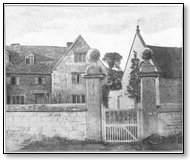
MYSTERIOUS ROOMS
The once magnificent Madeley Court, Salop[1] (now, alas! in the last stage of desolation and decay, surrounded by coal-fields and undermined by pits), is honeycombed with places for concealment and escape. A ruinous apartment at the top of the house, known as "the chapel" (only a few years ago wainscoted to the ceiling and divided by fine old oak screen), contained a secret chamber behind one of the panels. This could be fastened on the inside by a strong bolt. The walls of the mansion are of immense thickness, and the recesses and nooks noticeable everywhere were evidently at one time places of concealment; one long triangular recess extends between two ruinous chambers (mere skeletons of past grandeur), and was no doubt for the purpose of reaching the basement from the first floor other than by the staircases. In the upper part of the house a dismal pit or well extends to the ground level, where it slants off in an oblique direction below the building, and terminates in a large pool or lake, after the fashion of that already described at Baddesley Clinton, in Warwickshire.
[Footnote 1: This house must not be confused with "the Upper House," connected with Charles II.'s wanderings.]
Everything points to the former magnificence of this mansion; the elaborate gate-house, the handsome stone porch, and even the colossal sundial, which last, for quaint design, can hold its own with those of the greatest baronial castles in Scotland. The arms of the Brooke family are to be seen emblazoned on the walls, a member of whom, Sir Basil, was he who christened the hunting-lodge of the Giffards "Boscobel," from the Italian words "bos co bello," on account of its woody situation. It is long since the Brookes migrated from Madeley—now close upon two centuries.
The deadly looking pits occasionally seen in ancient buildings are dangerous, to say the least of it. They may be likened to the shaft of our modern lift, with the car at the bottom and nothing above to prevent one from taking a step into eternity!
A friend at Twickenham sends us a curious account of a recent exploration of what was once the manor house, "Arragon Towers." We cannot do better than quote his words, written in answer to a request for particulars. "I did not," he says, "make sufficient examination of the hiding-place in the old manor house of Twickenham to give a detailed description of it, and I have no one here whom I could get to accompany me in exploring it now. It is not a thing to do by one's self, as one might make a false step, and have no one to assist in retrieving it. The entrance is in the top room of the one remaining turret by means of a movable panel in the wall opposite the window. The panel displaced, you see the top of a thick wall (almost on a line with the floor of the room). The width of the aperture is, I should think, nearly three feet; that of the wall-top about a foot and a half; the remaining space between the wall-top and the outer wall of the house is what you might perhaps term 'a chasm'—it is a sheer drop to the cellars of the house. I was told by the workmen that by walking the length of the wall-top (some fifteen feet) I should reach a stairway conducting to the vaults below, and that on reaching the bottom, a passage led off in the direction of the river, the tradition being that it actually went beneath the river to Ham House."

